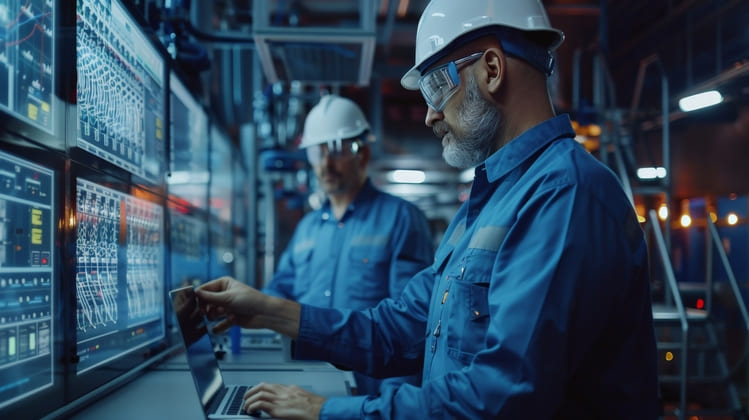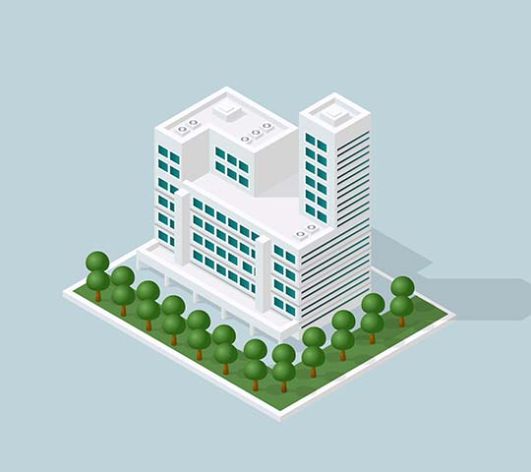In 2024, prioritizing sustainability is one of the most important initiatives for a company’s success.
However, managing this process effectively requires more than just using eco-friendly cleaning products or installing wireless charging stations.
It’s no longer enough to simply create a functional workspace; companies are quickly recognizing the need to create efficient, productive, and environmentally responsible workplaces.
A 2023 study by IBM clearly shows that potential employees prefer to work for employers with sustainable practices.
Below, we will explore the fundamental principles of sustainable facilities management, the differences between traditional and sustainable approaches, and practical ways to create a more eco-friendly work environment.
What is Sustainable Facilities Management?

Sustainable facilities management takes a holistic approach to managing workspaces.
This approach focuses on minimizing environmental impact, conserving resources, and creating a human-centric work environment.
When implemented correctly, sustainable management goes far beyond maintaining a building’s physical infrastructure. It encompasses everything from energy efficiency and waste reduction to sustainable procurement practices.
Effective facilities management not only reduces carbon emissions and costs but also aims to build a healthier and more sustainable future for both your employees and the planet.
The Importance of Sustainable Practices in the Workplace
Why should you care about creating a sustainable workplace?
As mentioned earlier, promoting sustainability in your workplace can reduce your carbon footprint, save costs, and create a more attractive work environment for your employees.
Here are other benefits of sustainability efforts:
- Reduced environmental impact: Conserving natural resources and reducing greenhouse gas emissions lead to a healthier planet.
- Cost savings: Energy-efficient lighting, smart HVAC systems, and waste reduction initiatives can lower operational costs.
- Improved employee well-being: A sustainable workplace boosts employee morale, productivity, and overall satisfaction.
- Enhanced brand reputation: Demonstrating your commitment to combating climate change can help attract environmentally-conscious customers and employees.
- Regulatory compliance: With increasing environmental regulations, sustainable facilities management ensures compliance and helps avoid penalties.
The Difference Between Sustainable Facilities Management and Traditional Facilities Management

Traditional facilities management focuses on day-to-day operations and maintenance, while sustainable facilities management takes a broader view, considering the long-term environmental and social impacts of those operations.
Let’s explore the differences in decision-making, focus, and metrics:
- Decision-making: Traditional facilities management decisions are usually driven by short-term needs, while sustainable facilities management considers the long-term impact on the environment and company culture.
- Focus: Traditional facilities management prioritizes functionality and cost-efficiency, while sustainable facilities management balances these priorities with environmental and social responsibility.
- Metrics: Traditional facilities management measures success through operational efficiency and cost control, whereas sustainable facilities management includes metrics like energy consumption, waste reduction, and employee well-being.
In this way, sustainable facilities management offers a more comprehensive and long-term approach than traditional methods.
6 Practices to Maintain a Sustainable Facility
Incorporating sustainable practices into your facility management strategy is crucial for creating an eco-friendly, efficient, and cost-effective workplace.
But what are some direct changes you can make to reduce your environmental footprint?
As you develop your sustainability goals, consider these practices:
1. Optimize Energy Efficiency
Optimizing energy usage is one of the most impactful ways to achieve sustainable facilities management. Consider installing renewable energy sources, like solar panels, or switching to LED lighting, which uses less energy and has a longer lifespan than traditional lighting.
Smart HVAC (Heating, Ventilation, and Air Conditioning) systems can adjust heating and cooling based on occupancy and outdoor weather conditions, reducing energy costs significantly.
In addition to equipment upgrades, you may want to implement an energy management system to monitor and control energy usage in real-time. Encouraging employees to adopt energy-saving habits, like turning off unused equipment and lights, can also contribute to more sustainable facility management.
These steps help reduce energy consumption, lower costs, and minimize your environmental impact.
2. Reduce Waste and Promote Recycling
Waste management is a critical component of creating a sustainable facility. Begin by conducting a waste audit to determine what types of waste your facility produces and in what quantities. Based on these findings, establish waste reduction and recycling goals.
Ensure recycling bins are easily accessible and clearly labeled throughout the office to prevent contamination.
Promote digital documentation to reduce paper waste, and encourage a culture of reuse and recycling among employees.
You might also consider working with vendors that use sustainable packaging materials and offer take-back programs for products like printer cartridges and electronic waste.
3. Invest in Space Management Software
A key component of sustainable facilities management is maximizing space efficiency.
Investing in space management software allows you to understand how your office space is being used.
Features like real-time occupancy tracking, room reservations, and workspace optimization can help reduce wasted space and energy consumption.
Workplace management platforms like Girin provide data-driven insights into office usage, helping you identify underutilized areas and adjust your layout accordingly.
By optimizing space, you can reduce the need for additional square footage, lower energy costs, and create a more flexible, sustainable workplace environment.
4. Embrace Remote Work Capabilities
The rise of remote work has proven that many tasks can be efficiently performed outside the office, reducing the need for extensive physical space and commuting.
Embracing remote work, either partially or fully, can significantly lower your facility’s environmental impact.
Reduced energy usage, less waste production, and fewer emissions from commuting create a more sustainable office environment.
Girin supports remote work environments with robust tools like Mobile PDKS (Personnel Attendance Control System), allowing employees to easily log their attendance from any location. With QR code systems and GPS verification, remote employee tracking is both secure and efficient.
Offering flexible work arrangements also boosts employee satisfaction and retention.
5. Incorporate Green Spaces and Biophilic Design
Green buildings and biophilic design integrate natural elements into the workplace, which is essential for sustainable facilities management. Adding plants and greenery improves air quality, creates a more welcoming environment, and boosts productivity. Natural light, water features, and organic materials can create a calming atmosphere that reduces stress and enhances focus.
Consider creating an indoor garden or green wall, and use sustainable materials for furniture and fixtures. These design elements not only improve employee well-being but also reduce the environmental impact of your workspace.
6. Ensure Sustainable Resource Procurement
The procurement process is another key area where companies can make strides toward environmental protection. When evaluating asset management, choose vendors that prioritize sustainable sourcing, low-waste packaging, and energy-efficient products.
Establish guidelines for purchasing products made from recycled or sustainable materials, and encourage the use of energy-efficient equipment. Regularly review your suppliers to ensure they meet your sustainability criteria, and look for opportunities to consolidate purchases to reduce shipping emissions and packaging waste.
In Conclusion
Adopting sustainable facilities management practices benefits the environment, enhances your brand reputation, reduces costs, and improves employee satisfaction.
By prioritizing sustainability in your workplace, you are creating a healthier, more productive environment for your team while contributing to a greener future.
These steps help your company stay ahead of regulatory changes, meet growing consumer and employee expectations, and achieve long-term success in a world increasingly focused on sustainability.
Leveraging tools like Girin can streamline this transition with features like real-time occupancy tracking, room reservation systems, and space optimization analytics.
These capabilities provide valuable insights to help reduce energy consumption, minimize wasted space, and promote more efficient use of resources throughout your facility.



